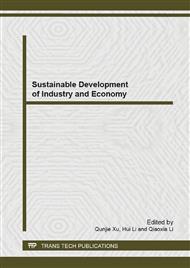p.840
p.844
p.851
p.856
p.860
p.866
p.870
p.876
p.883
The Study of Company's Carbon Abatement Investment under Carbon Tax
Abstract:
Emission tax is one of the most efficient economic mechanisms to reduce carbon emissions. Under the situation that government imposes tax , we develop a two-stage dynamic game model. First, Government achieves total carbon emissions targets by imposing carbon tax. Second, two companies constitute a Cournot duopoly market. Companies adjust their output and the proportion of carbon emissions to maximize profits. And through numerical analysis, we find that: When the Government set up the target emission, it will encourage companies to invest carbon emissions abatement, and enable companies to reduce carbon emissions. And then the Government may reduce the rate of carbon tax. Finally, Government and companies can get win-win situation. In the Cournot duopoly market , Abatement Company has more advantage in the competition of the market and more sustainable under the constraint of carbon tax. Otherwise, Non-abatement company is more sensetive to the changes of carbon tax.
Info:
Periodical:
Pages:
860-865
Citation:
Online since:
December 2013
Authors:
Keywords:
Price:
Сopyright:
© 2014 Trans Tech Publications Ltd. All Rights Reserved
Share:
Citation:


